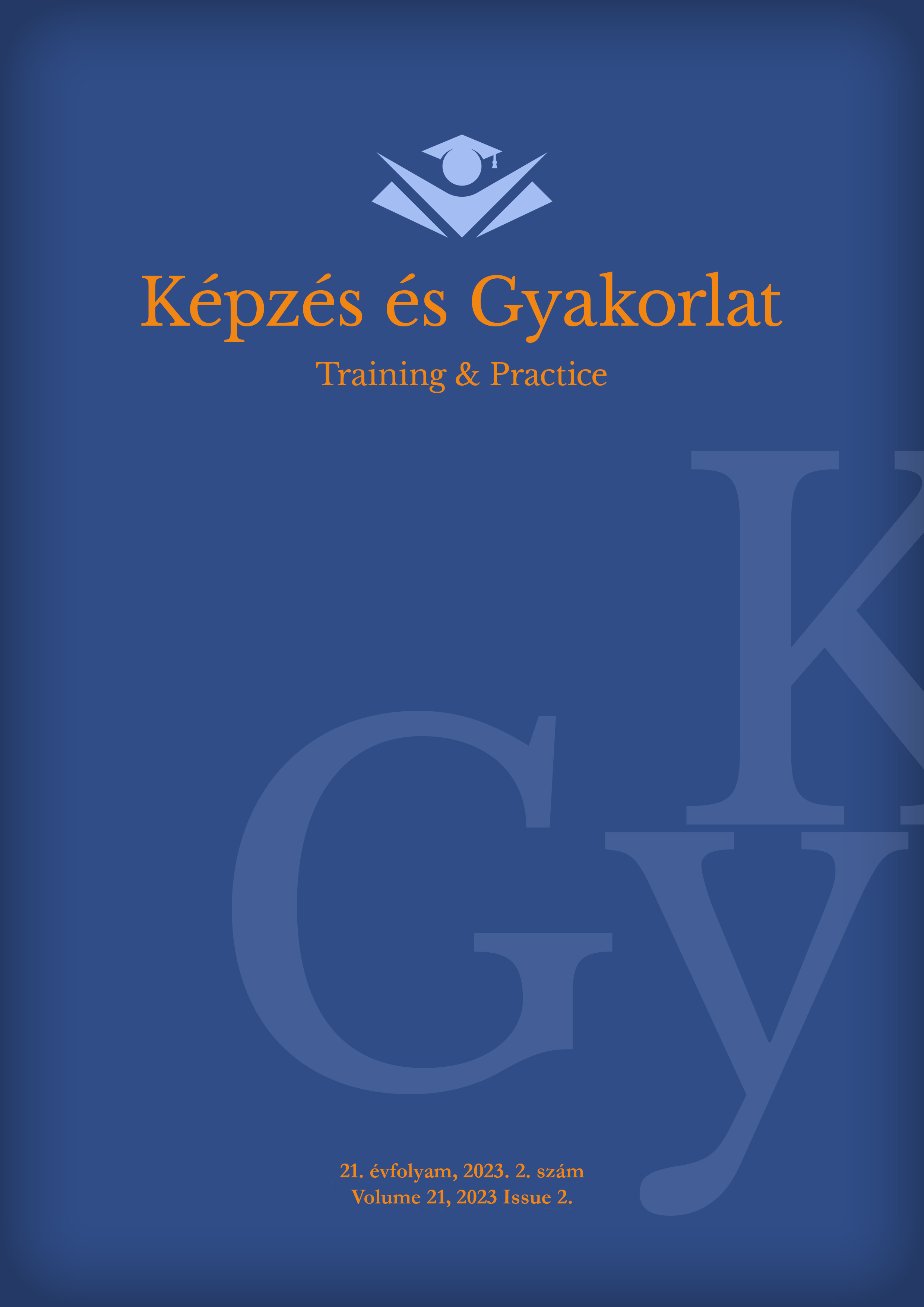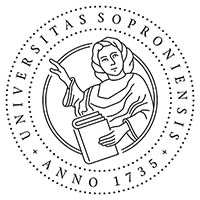A német kisegítő iskola kialakulása és fejlődése 1867 és 1918 között
DOI:
https://doi.org/10.17165/tp.2023.2.67-75Schlagwörter:
gyógypedagógia-történet, enyhén értelmi fogyatékos tanulók, kisegítő iskolaAbstract
A gyógypedagógia-történeti kutatások rámutatnak arra, hogy Magyarországon az enyhén értelmi fogyatékos gyerekek oktatása érdekében tett első erőfeszítések a 19–20. század fordulóján a leginkább modellnek tekintett német mintát követve jelentkeztek (pl. Gordosné, 2000; 2001). Ez teszi indokolttá az iskolareformok németországi mozzanatainak elemzését. Jelen tanulmány célja, hogy áttekintő közlemény keretein belül átfogó képet nyújtson a német kisegítő iskoláztatás kialakulásáról és fejlődésének első szakaszáról. A vizsgált időszak az első kisegítő iskola 1867-ben való létesítésétől a Német Császárság 1918-ban való megszűnéséig tartó időszakra fókuszál, figyelembe véve az intézményesülési folyamat 18. században kezdődő előzményeit. A kutatás a gyógypedagógia olyan területébe nyújt betekintést, ami jelenleg kevéssé vizsgált a magyar kutatási szcénában.
Literaturhinweise
Beschel, E. (1963). Der Eigencharakter der Hilfsschule. Beltz.
Dietze, T. (2019). Die Entwicklung des Sonderschulwesens in den westdeutschen Ländern. Empfehlungen und Organisationsbedingungen. Verlag Julius Klinkhardt. https://doi.org/10.35468/5736
Ellenbach, M. (1901). Külön iskolát a gyöngéknek! Néptanítók Lapja, 34(14), 6–7.
Ellger-Rüttgardt, S. L. (2003). Lernbehindertenpädagogik. Studientexte zur Geschichte der Behindertenpädagogik. Band 5. Beltz UTB.
Ellger-Rüttgardt, S. L. (2008). Geschichte der Sonderpädagogik. 1. Auflage. Ernst Reinhardt Verlag.
Ellger-Rüttgardt, S. L. (2019). Geschichte der Sonderpädagogik. 2. Auflage. Ernst Reinhardt Verlag.
Éltes, M. (1928). Iskolák szekunda nélkül. Magyar Gyógyedagógia, 16(4–6), 79–82. https://doi.org/10.36198/9783838587653
Gordosné Szabó, A. (2000). A gyermekközpontú pedagógia egyik bölcsője. Százhuszonöt éve született Éltes Mátyás. In Pukánszky B. (Eds.), A gyermek évszázada (pp. 34–42). Osiris Kiadó.
Gordosné Szabó, A. (2001). Éltes Mátyás – egy követésre méltó életút. Beiskolázás és kiválasztás a kisegítő iskoláztatás történetében. Bárczi Gusztáv Gyógypedagógiai Tanárképző Főiskola.
Hänsel, D. & Schwager, H. J. (2004). Die Sonderschule als Armenschule. Vom gemeinsamen Unterricht zur Sondererziehung nach Braunschweiger Muster. Peter Lang Verlag.
Juba, A. (1900). A gyengetehetségűek iskolája. Magyar Paedagogia, (9), 19–34.
Kämmel, H. J. (1879). Harnisch, Wilhelm. In. Allgemeine Deutsche Biographie (ADB). Band 10. (pp. 614–616). Duncker & Humblot.
Mesterházi, Zs. (2019). Társadalmi válaszok. In Mesterházi, Zs. & Szekeres, Á. (Eds.), A nehezen tanuló gyermekek iskolai nevelése (pp. 119–149). ELTE Bárczi Gusztáv Gyógypedagógiai Kar.
Münz, A. (1934). Dr. Guggenbühl János Jakab. Magyar Gyógypedagógia, 22(9–10), 125–133.
Myschker, N. (1969). Der „Verband der Hilfsschulen Deutschlands“ und seine Bedeutung für das deutsche Sonderschulwesen. Reßmeier.
Myschker, N. (1983). Lernbehindertenpädagogik. In Solarová, S. (Eds.), Geschichte der Sonderpädagogik (pp. 120–166). Kohlhammer.
Németh, A. (2005). A magyar pedagógus professzió kialakulásának előtörténete a 18. században és a 19. század első felében, Pedagógusképzés, 3(1), 17–31.
Németh, A. (2012). Magyar pedagógusképzés és pedagógus szakmai tudásformák I. 1775–1945. Nemzeti fejlődési trendek, nemzetközi recepciós hatások. ELTE Eötvös Kiadó.
Obolenski, A. (2001). Integrationspädagogische Lehrerinnen- und Lehrerbildung. Grundlagen und Perspektiven für „eine Schule für alle”. Verlag Julius Klinkhardt.
Ramirez, F. & Boli, J. (1988). A népoktatás politikai megteremtése: európai kezdetek és világméretű intézményesülés (pp. 7–33). OKI.
Roboz, J. (1898). A gyengetehetségűek oktatása. Lampel Róbert (Wodianer F. és fiai), Cs. és Kir. Udv. Könyvkereskedés.
Schoelzel, K. (1981). Zur Vorgeschichte der Braunschweiger Hilfsschule. In Bleidick, U. (Eds.), Heinrich Kielhorn und der Weg der Sonderschulen. 100 Jahre Hilfsschulen in Braunschweig (pp. 15–37.; pp. 52–58). Waisenhaus-Buchdruckerei und Verlag,
Szerző nélkül (1906). Külföldi szemle. Néptanítók Lapja, 39(11), 11.
Ulrich, H. (2016). Pädagogik bei Lernschwierigkeiten: Sonderpädagogische Förderung im Förderschwerpunkt Lernen. 2. Auflage. Verlag Julius Klinkhardt.
Wehrhahn, A. (1913). Deutsche Hilfsschulen in Wort und Bild. Carl Marhold Verlagsbuchhandlung.
Weise, T. J. (1820). Betrachtung über geistesschwache Kinder in Hinsicht ihrer Verschiedenheit, Grundursachen, Kennzeichen und der Mittel ihnen auf leichte Art durch Unterricht beizukommen. Mit besonderer Rücksicht auf die Pestalozzische Rechenmethode. [Hely nélkül].
Wiebke, P. (2006). Unterrichtsthema Holocaust in der Förderschule? Empirische Untersuchung zur Entwicklung eines Unterrichtskonzepts für den Förderschwerpunkt Lernen. Verlag Julius Klinkhardt.
Downloads
Veröffentlicht
Ausgabe
Rubrik
Lizenz
Copyright (c) 2023 Kovács Krisztina

Dieses Werk steht unter der Lizenz Creative Commons Namensnennung - Nicht-kommerziell - Keine Bearbeitungen 4.0 International.












